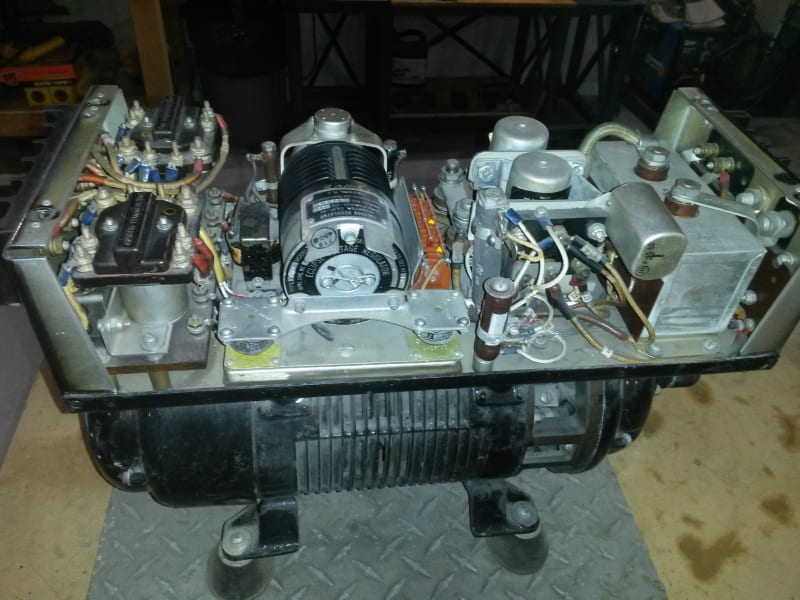Dear Heritage Buffs, I am reading a report from 1912 in which the author is comparing rotary converters with motor-generator sets for the conversion of 440 V AC to 600 V DC for tramways use. Can you please explain the difference? In another report the DC power stations of that time are said to have an electrical machine described as a 'balancer'. Could you please help with this as I can find no description of this device?
Navigation
Install the app
How to install the app on iOS
Follow along with the video below to see how to install our site as a web app on your home screen.
Note: This feature may not be available in some browsers.
More options
Style variation
-
Congratulations cowski on being selected by the Eng-Tips community for having the most helpful posts in the forums last week. Way to Go!
You are using an out of date browser. It may not display this or other websites correctly.
You should upgrade or use an alternative browser.
You should upgrade or use an alternative browser.
Heritage: Early 20th century power generation 1
- Thread starter Vegemite
- Start date
- Status
- Not open for further replies.
- Moderator
- #21
Driving with induction motors rather than synchronous motors would make synchronizing a little easier. You wouldn't have to slip poles as the induction motor is already slipping poles.
Bill
--------------------
Ohm's law
Not just a good idea;
It's the LAW!
Bill
--------------------
Ohm's law
Not just a good idea;
It's the LAW!
And it works the other way, too. A rotary inverter from a wartime aircraft that converts 28VDC into 120VAC Delta at 400 Hz sitting in a forgotten corner of my garage. I dunno what to do with it really.A Rotary Converter is a device that shares a rotor with both the AC circuit and the DC circuit.

Please remember: we're not all rednecks!
What in the world would you do with 400Hz?
That said, the old power system analizers,used 400Hz, likely to make things smaller.
This was before computers, so the 400Hz was fed into the generator units, where the field was the single phase output to the other parts of the wired network.
These were wired like the network (grid), with matching line, transformer, and load units, so that a load flow model could be run.
The generator units could be shifted in phase angle and voltage to make the flows in model as observed.
I have never seen one work, but the university I attended, years ago, had one, complete with a 60Hz-400Hz MG set.
That said, the old power system analizers,used 400Hz, likely to make things smaller.
This was before computers, so the 400Hz was fed into the generator units, where the field was the single phase output to the other parts of the wired network.
These were wired like the network (grid), with matching line, transformer, and load units, so that a load flow model could be run.
The generator units could be shifted in phase angle and voltage to make the flows in model as observed.
I have never seen one work, but the university I attended, years ago, had one, complete with a 60Hz-400Hz MG set.
- Moderator
- #25
400 Hz is a standard aircraft frequency.
1 KVA, 50 Hz equipment may be pushed to 8 KVA at 400 Hz.
Motors, generators and transformers are much smaller and lighter for a given capacity.
Bill
--------------------
Ohm's law
Not just a good idea;
It's the LAW!
1 KVA, 50 Hz equipment may be pushed to 8 KVA at 400 Hz.
Motors, generators and transformers are much smaller and lighter for a given capacity.
Bill
--------------------
Ohm's law
Not just a good idea;
It's the LAW!
- Moderator
- #27
What else would you use 400Hz for? Providing an excitation source for synchros springs to mind (thank you for reminding me how much I hate those things).
And don't try running that inverter up without decent hearing protection (they scream like a banshee).
My first "LAND AT ONCE" - OK, that field, there, now. Was when one of those inverters packed up.
A.
And don't try running that inverter up without decent hearing protection (they scream like a banshee).
My first "LAND AT ONCE" - OK, that field, there, now. Was when one of those inverters packed up.
A.
ZF,
I have, you're right, it's loud.
I also got a cute little aircraft oil cooler fan motor to run off of it.
There wasn't much point of doing this, I admit.
Maybe the local aero museum will have some use for it.
Please remember: we're not all rednecks!
I have, you're right, it's loud.
I also got a cute little aircraft oil cooler fan motor to run off of it.
There wasn't much point of doing this, I admit.
Maybe the local aero museum will have some use for it.
Please remember: we're not all rednecks!
400 Hz was, and in some cases still is, used to supply power to the magnetic amplifiers controlling unit excitation in generating stations of that 1950s/1960s vintage.
CR
"As iron sharpens iron, so one person sharpens another." [Proverbs 27:17, NIV]
CR
"As iron sharpens iron, so one person sharpens another." [Proverbs 27:17, NIV]
- Status
- Not open for further replies.
Similar threads
- Replies
- 19
- Views
- 1K
- Question
- Replies
- 0
- Views
- 319
- Question
- Replies
- 19
- Views
- 8K
- Replies
- 6
- Views
- 922
- Replies
- 2
- Views
- 801
